Back
Moonshot Mafia #15 | RE(SOURCE): Empowering Everyone with the Freedom to Redefine Fashion
Fireside Chats
By Moonshot Commons
Jun 14,202313 min read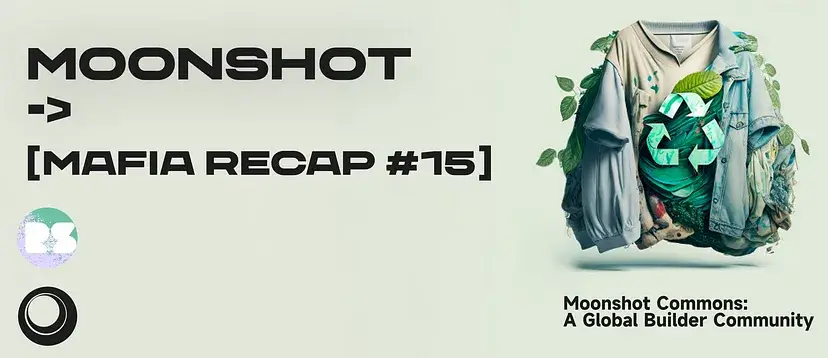
RE(SOURCE) is a Web3 clothing supply chain company that provides a platform to connect consumers and producers of sustainable clothing. It leverages blockchain technology to track production and ensure transparency, enabling customers to make informed decisions about their purchases. It also provides an ethical and sustainable supply chain that emphasizes local production, fair wages, and environmental consciousness. By connecting consumers and producers, RE(SOURCE) is transforming the clothing industry and helping to create a more sustainable future.
In this century, the clothing industry has undergone several earth-shaking changes: Zara and its fast fashion model, which emerged at the beginning of the century, were completely accepted by this traditional industry. Shein and Cider once again used their powerful data analysis capabilities and agile turnover rates to change people’s definitions of the fashion industry.
Unlike the long-standing designer-driven culture of the apparel industry, new fashion brands have seized the digital development process. They take a large amount of user data as their guide, provide real-time analysis and feedback on user preferences, and respond and iterate agilely through a flexible supply chain, opening up new ideas for a new generation of apparel entrepreneurs.
At Moonshot Commons’ Web3 Fireside Chat #15, we invited Tatiana and Ziqi, partners of Apollo Day and founders of the supply chain SEM platform RE (SOURCE), to chat about the changes in the clothing industry and agile supply chain.
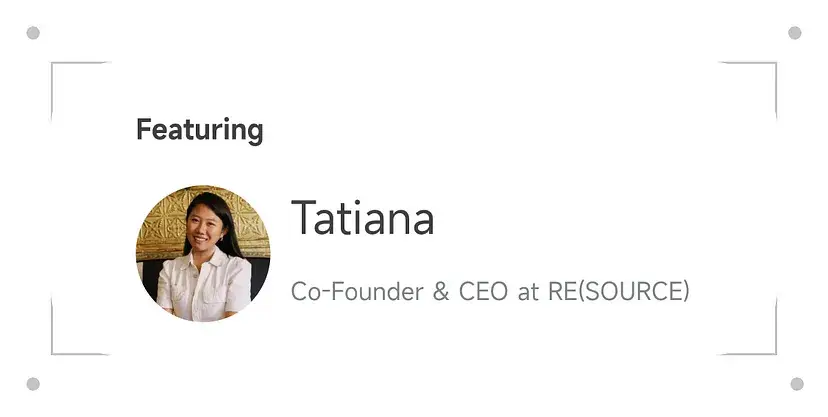

Key Takeaways:
1.The clothing industry has seen a dramatic shift in the 21st century due to the emergence of Zara, Shein, and Cider, who have utilized powerful data analysis capabilities and agile turnover rates to redefine the industry.
2.Brands now need to embrace a more agile and flexible supply chain in order to respond to changing consumer preferences in real time.
3.SaaS-Enabled Marketplaces can help to shorten the production cycle and reduce the initial production quantity for quick trial and error.
4.B2B models provide an opportunity for brands to focus on optimizing the supply chain without investing in expensive marketing.
5.Gen Z entrepreneurs have access to a range of resources and support to help them succeed in their business ventures.
6.Value-oriented entrepreneurship is becoming more and more popular as opposed to the ‘getting rich quickly’ mindset of previous generations.

Moonshot Commons:
Could you please briefly introduce yourselves?
Tatiana:
I graduated from Duke Class of 2019. After finishing high school, I spent a gap year in China as an entrepreneur in overseas education. After graduating from college, I started working as an equity derivatives trader at Barclays. Now, I am a full-time entrepreneur in New York. I have also attempted to work on several products with Ziqi and been on different tracks. At present, our optimistic long-term opportunity is in the clothing supply chain. Our company RE (SOURCE) is backed by Outlander VC and Amino Capital.
Ziqi:
I also entered college in 2014 and graduated in 2019. I took a year off between my junior and senior years. At that time, I was very interested in public welfare and did a lot of related work at the beginning. Later, I created an e-commerce brand and continued operating it after I returned to school. This was the first time I came into contact with entrepreneurship.
After graduation, I joined Deloitte in New York and worked in consulting for a year and a half. Later, by chance, I met Tatiana and quit my job to work on projects with her. My mother has a clothing production company that has been in business for 20 years. In fact, it is still a very traditional foreign trade company. We saw some things that can be improved from its model, so we came up with the idea of creating RE(SOURCE).
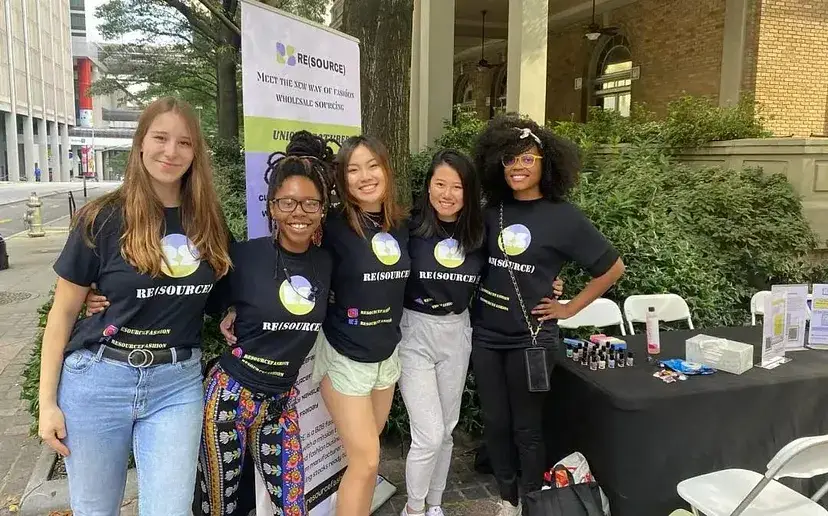
Moonshot Commons:
According to your observation, what are the differences between the traditional clothing production model and the model now?
Ziqi:
Take my mother’s company, for example, more than half of their employees are order takers. The company will assign the orders from the brand designers to different order takers, and then the order takers will follow the whole production process of the garment factory from the beginning to the end. This model is actually very traditional. From my mother’s entry into the business in 2000 to the present, in terms of operation mode and communication with customers, order takers have carried out the business through phone calls, text messages, emails, etc. This approach has remained the same for the past few decades. Nothing has changed.
In fact, the position of order takers is still available in many companies today, but the project can be realized through many electronic systems with improved efficiency. An order taker may have been able to follow 50 orders in the past, but now may be able to follow 500 orders. If done better, the traditional communication model can be replaced by a more efficient one.
Tatiana:
In addition, under the traditional production model, brands usually design some styles in advance and send them to the factory. It will go through a long production cycle, starting with prototypes, then rounds of samples, and finally a formal product for mass production. Usually, many pieces are produced for one style. For some big brands, it is quite common to produce tens of thousands of pieces of the same style. After the style is launched, the brand would begin to use its own marketing channels, such as advertising influencers, to target consumers. This is how the apparel industry has worked for a long time.
However, in the past 5 years, with the emergence of some fast fashion brands like Shein and Cider, we have seen that the clothing industry has entered a new era. It is no longer up to the brand designer to decide what styles to produce and to sell to consumers. Instead, it uses a set of extremely agile processes to collect what consumers like at the forefront, convert the data into production information in a timely manner, send the information to the factory, and produce in a very short time. This is a fundamental change in the clothing industry.
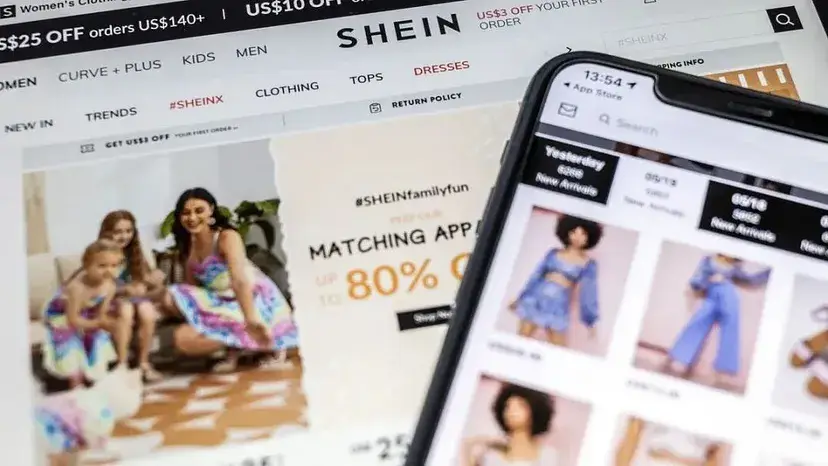
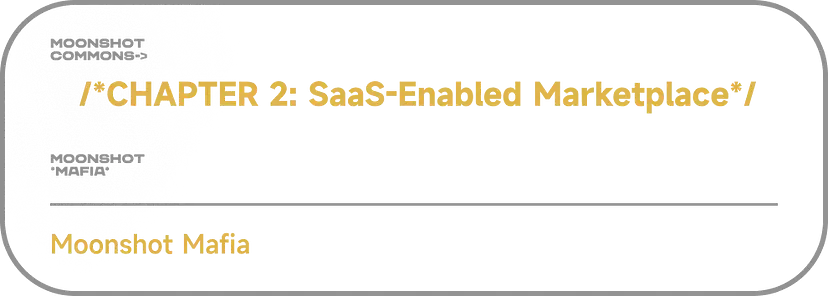
Moonshot Commons:
Why did you adopt the product form of SaaS-Enabled Marketplace?
Tatiana:
The choice of such a product form is actually to a large extent the result of finding corresponding solutions based on these changes in the clothing industry.
In order to better adapt to the new model of the clothing industry, brands need to achieve two points: the first point is that the minimum order quantity must be small because consumers’ preferences are changing rapidly. Brands want to reduce inventory pressure no matter how large the brands are. A design can quickly become outdated. We see that many brands now make 30 pieces of a style first, and increase production after testing whether consumers like it or not.
The second is the short production cycle. Long production cycles are no longer suitable for the new era. Like Shein, which has shortened the production cycle to 7 days, new-era brands need a shorter production cycle to quickly respond to the market.
What we are doing now is helping clothing brands to shorten the production cycle and reduce the initial production quantity for fast trial and error. When the brand has a demand, we can deliver the goods quickly. To achieve this, it is necessary to build a very agile and flexible clothing supply chain. We see that the future of the fashion field should be in the direction of gradual digitization, so our current product RE(SOURCE) is in such a marketplace, using SaaS digital tools to realize the supply that is more suitable for modern production models.
Our marketplace is to connect with emerging American clothing brands and high-potential domestic factories for cooperation. Most of these emerging clothing brands are founded by millennials or Gen Z, and they already have a data-oriented production and marketing concept. We then divide their needs and dispatch the needs to domestic factories.
Ziqi:
Adding onto Tatiana’s point, the construction of SaaS software will also help the supply factories to a large extent, which can significantly improve production efficiency. The production of one piece of clothing itself involves many processes, from the selection of fabrics to the selection of decorations to the printing of fabrics. In terms of communication, all of the information is very error-prone. Therefore, if we can provide a comprehensive system so that all aspects of every step are clear to everyone relevant, we can greatly reduce the manpower required by the factory and increase efficiency.

Moonshot Commons:
Why did you choose the B2B model? What are the differences between your brand and B2C brands such as Shein and Cider?
Tatiana:
We chose the B2B model partly because we saw a market opportunity. In fact, the flexible supply chain is feasible in services on both the B-side and the C-side. Servicing the C-side is making our own brand, and servicing the B-side is providing the supply chain to some front-end brands. There are indeed large companies that have made a supply chain for B2C. There is no need to copy Shein or Cider and compete with them in the market. The B2B market is still empty.
The challenges of building B2B certainly remain. For example, when doing B2C, the tolerance rate for error is very high. Because with your own brand, even if the products you make are slightly different from the previous designs, as long as there is no serious problem, you can sell them. But B2B will be very different because our customers are other brands. When they work with us, they will not give us a lot of tolerance for errors that we make. Their expectation is to have products exactly the same as the design.
If we were B2B, we need to be more careful in the design process, and we need to set up multiple follow-up checks to avoid errors. Yet, at the same time, because we are not directly facing customers, we don’t need to spend so much money and energy to go to the front to attract consumers. Under such circumstances, we can devote more resources and energy to the construction of the supply chain.
Ziqi:
In fact, speaking from our initial intention, many products we tried to build before were for the B-side. Our family members are all entrepreneurs of small and medium-sized enterprises, so we have always wanted to serve such a group, making entrepreneurship itself an easier process and making it a life choice for everyone.
The purpose of RE(SOURCE) is to make the beginning of a clothing brand’s journey a very easy process- something that everyone can do, and to liberate everyone’s life, not having to be a laborer. This is also a starting point for us to go B2B.

Moonshot:
When you communicate with different fashion designers, what are the differences in their concerns?
Ziqi:
There are several types of customers we are currently in contact with. There are relatively high-end pure designer brands. They may have sold some brands in some large department stores. They may not even sell directly to consumers, but to brands, which then sell to consumers. They have particularly high requirements for design and are more adaptable to traditional production models, such as communicating directly with agents because their own needs will be very specific.
The brands in another customer category are those iterating their designs with user data. This category is slowly increasing now Shein and Cider. The founders of many of these brands may have a background in AI technology or may have been in the clothing business for many years. For example, one of our customers is a long-term practitioner in the industry. He is very clear about what will sell well, and his empirical data can support them to make better production decisions.
The third category of customers is Gen Z entrepreneurs who are trying to create their own brands but don’t have a lot of experience. Then our advantage is that we can simplify the entire process of entrepreneurship and trial and error, making it easy for novices to operate. They may have no design experience at all, but we can help them produce things through some of their textual descriptions and pictures.


Moonshot Commons:
Why did you choose to quit investment banking and devote yourself to entrepreneurship?
Tatiana:
For me, entrepreneurship means realizing the value of life.
When I leave this world one day, I hope to leave some legacy behind. It is difficult to realize this wish by working in a company and climbing the ladder, even if we are young now, we can raise money, decide what kind of business to build, which group of people to serve, and what kind of value to create. It is very different if we start our own business.
There are countless examples to prove that a successful enterprise can create significant social value, and I think that my personal value and the social value I can create are closely connected. It is such an inner driving force that led me to the path of entrepreneurship.
Ziqi:
It’s actually the same for me. At that time, we had no funding at all when we quit our jobs. We found our direction slowly as well. It is only because of our faith in the path of entrepreneurship that we have persisted until today.
I hope that when I am young, I can learn a lot of new things every day, and I can believe what I do is really influential. When I was working in consulting before, as a newcomer, I didn’t have much say in many projects. Even as a supervisor, what you do is insignificant to others. Many times, the slides you made completely lost their value after being taken by the client to support one of their arguments. So I feel that my time was not really used purposefully.
However, after starting entrepreneurship, I can feel that every action and decision I make is truly meaningful to my customers. I feel that this is one of the biggest motivations for building a business.

Moonshot Commons:
Your families also have entrepreneurial experiences. What do you think is the difference between you and the previous generation of entrepreneurs? What new opportunities and challenges do you have?
Tatiana:
I can’t define the entire previous generation of entrepreneurs, but I can share the experiences of our own family. My dad and Ziqi’s mom were also entrepreneurs, but they were not tech entrepreneurs.
I think we have the same spirit in our bones. We all love to fight hard, but some internal driving forces are different. At that time, there were probably more driving forces because of the economic reform. They wanted to go out to do business to improve the living condition of their family. It was a kind of entrepreneurship oriented towards making money. We feel that the successful entrepreneurs of this generation are all value-oriented, going in for a pot of gold and getting out, rather than holding a speculative mentality. There may be such successful examples, but most of the ones remembered in this era are brands and entrepreneurs with more empathy and value.
Ziqi:
I think another difference is that our generation of entrepreneurs really has a very mature ecosystem, especially in the United States. There are quite a lot of active circles waiting for you to join, and they are willing to communicate with us. Entrepreneurs can quickly obtain resources. I feel that everyone in the entrepreneurial community is very enthusiastic and supportive of each other.
Age and experience are also usually not issues. Both of us started a business and raised money just after graduating from college and working for a year. At that time, I felt that in the United States, they would not think that you were too young or that the project was not mature enough and therefore not willing to invest, especially at that time we did not have much data. If they see the right people and feel that your track is feasible and you have advantages, they will be very willing to support your business. Most VCs in China tend to favor the projects of big-name entrepreneurs with strong technological backgrounds. Overall, there is still some lack of tolerance for young entrepreneurs.
Over the past few decades, there have been more and more VCs and angel investors, all of which have provided great opportunities for our generation of entrepreneurs. The infrastructure in the industry is also great, and it is very easy to test an idea. This is where our generation of entrepreneurs is lucky.
